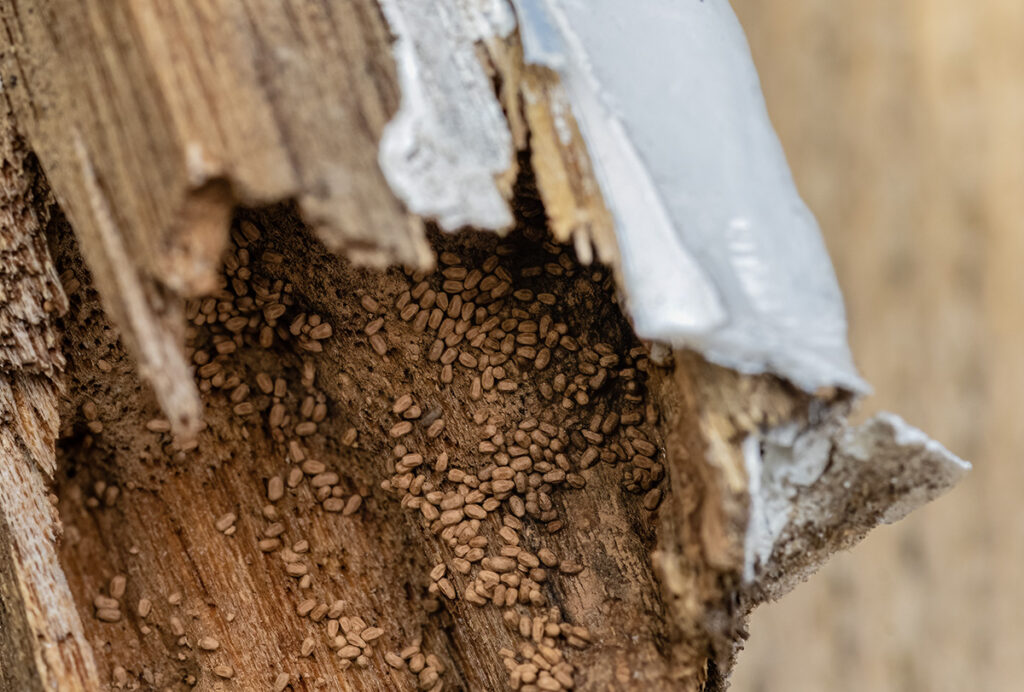WHAT YOU SHOULD KNOW ABOUT
DRYWOOD TERMITES
Drywood termites are insects that are known for forming colonies inside dry wood above the ground. They are social creatures and live in groups that can range in size from a few hundred to several thousand individuals. Unlike other types of termites, drywood termites do not require contact with soil to survive. Instead, they get the moisture they need from the wood they digest.
Drywood termites prefer to nest under wooden roof shingles, eaves, or siding. Once they have established a colony, they can cause significant damage to the structure of a building over time. There are three common species of drywood termites found in Texas – Incisitermes snyderi, Cryptotermes brevis, and Incisitermes minor.
The presence of winged reproductives is usually the first sign of a drywood termite infestation. They can be found swarming from small openings on the surface of the wood. If they are found within the structure, it is almost a sure sign that they are in the structural timbers of the building. If they are found outdoors, they may have come from either within the structure or from nearby timber or brush.
Because drywood termites live within the wood, they produce fecal pellets. During an inspection, piles of fecal pellets will be noticed near the infested wood. The pellets are generally the color of the wood that they have been feeding on, about 1/32 inches long, and have long dimples or flutes down each surface. The pellets tend to be blunt at one end and pointed at the other.

Damage to wood, though seldom apparent, definitely indicates a past or present infestation of drywood termites. These termites consume both the harder summerwood and the softer springwood of timbers, leaving a smooth sculptured appearance to their galleries. Fecal pellets will be present in the galleries.
It is important to address any termite infestations as soon as they are detected. Drywood termites are found throughout the state of Texas, with the highest concentrations along the Gulf Coast. Our licensed termite control professionals can help you identify the specific type of termite that is causing problems and develop an effective treatment plan to eliminate the infestation and prevent future damage to your property.
Reference: https://urbanentomology.tamu.edu/urban-pests/termites/drywood/
If you suspect or see signs of a drywood termite infestation, schedule an inspection with Coastal Fumigators today! We are the leading experts in fumigation in the state of Texas. With over 100 years of experience, Coastal Fumigators sets the standards for safe and complete removal of drywood termites. 100% guaranteed!
